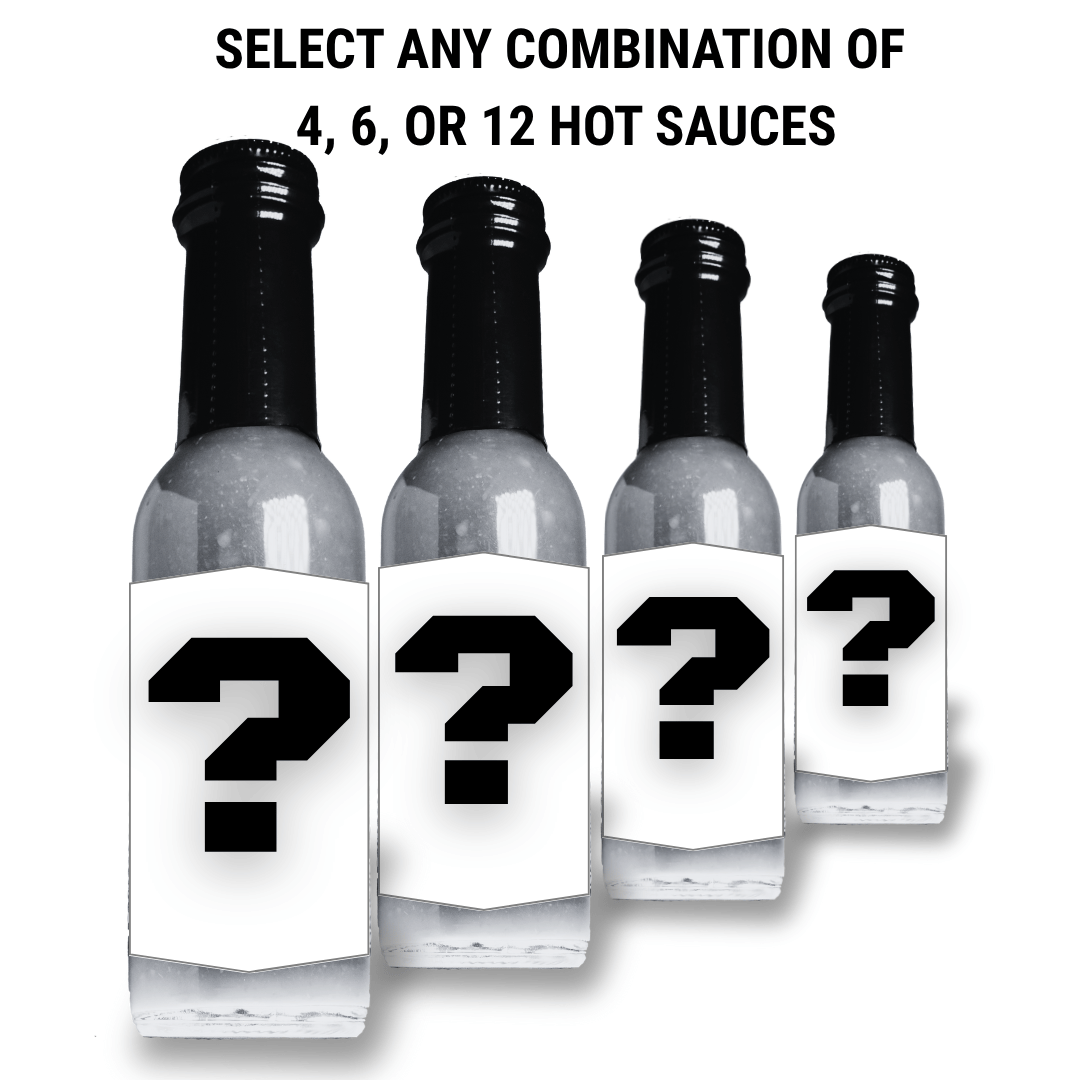Introduction
TL:DR: Capsaicin is one of several capsaicinoid compounds found in chili peppers. Most of the capsaicin is found within the white pith (membrane) of the peppers.
What the hell is capsaicin? What the heck are scoville units? These are the questions that keep us up at night.
Let's start by answering the first question and then see where we end up.
“Capsaicin” is one of several capsaicinoid compounds found in chili peppers. There are over twenty different compounds in most chilies. The differentiating molecular structures of the chilies causes the capsaicinoids to react differently; each pepper may or may not cause a mouth burn and body endorphin rush. Different chilies have different amounts of these compounds, which in turn allows some peppers to hit you all at once and other to hit you in the gut, and even other that have a slow creeping burn that lingers longer than you would probably like.
 |
These variations can create unique and imaginative sauces across the board when combined with other ingredients that may ‘mask the heat’ initially. For example, within ourTango Mango we intentionally added sugary fruits to play along with the delayed heat wave from habanero peppers.
Generally speaking, capsaicin is largely stored within the placental tissue (which holds the seeds), the internal membranes and, to a lesser extent, the other fleshy parts of the fruits of plants in the genus Capsicum. Another common misconception is that the seeds produce a large amount of capsaicin but in reality they do not. The highest concentration of capsaicin can be found in the pith of the inner wall, where (you guessed it) the seeds reside.
All of the different capsaicinoids have been erroneously lumped together under the umbrella term of ‘capsaicin’ because that one capsaicinoid is the most prominent in most chilies. Here is a list of the most common capsaicinoids:
|
Capsaicinoid Name |
Abbrev. |
Typical relative amount |
Scoville Heat Units (SHU) |
|
Capsaicin |
C |
69% |
16,000,000 |
|
DHC |
22% |
16,000,000 |
|
|
NDHC |
7% |
9,100,00 |
|
|
HC |
1% |
8,600,000 |
|
|
HDHC |
1% |
8,600,000 |
|
|
PAVA |
n/a |
9,200,000 |
*For a full list of capsaicinoids please check thislink. The first five capsaicinoids occur naturally while Nonivamide (PAVA) is synthetic.
In its pure form capsaicin is a hydrophobic, colorless, highly pungent, crystalline to waxy solid compound. Naturally, you can buy pure capsaicin online; it is usually stored within an Ethanol and to combat spoilage. Pure capsaicin also boasts a whopping 16 million scoville units.
Did we lose you yet?...No? Good. Let's continue.
Food, Science, & How I Learned to Love the Burn

All of this is good and well BUT why is it important? Well to properly answer that you will need to have a base understanding of scoville units. You can read more about themhere in our in-depth blog post. For the sake of this article the fundamentals will do; simply put the higher the scoville units the more intense the heat/pungency. You can also check out Scott Robert’s comprehensiveScoville Scale chart that includes chilies, sauces and other hot products/extracts for an idea of where your favorite peppers and sauces sit.
Outside the world of cuisine capsaicin also plays a role with the medical world; largely in topical creams. These creams are mostly used as a circulatory stimulant and analgesic (pain killer). An aerosol extract of capsaicin can also be used to produce pepper spray which in turn is used by law enforcement as a non lethal means of incapacitating a person. Another useful use is as a natural insecticide in the form of dust, powders, and sprays.
Fun Fact:Birds are completely unaffected by capasican but are attracted to the bright colors of the plants that carry them. They are used to spread and disperse their seeds.
Burning and Pain

Only plants that fall under the genus of Capsicum produce capsaicinoids, which are alkaloids. Alkaloids are defined as being naturally occurring organic compounds that mostly contain basic nitrogen atoms. This group also includes some related compounds with neutral and even weakly acidic properties.
The burning sensation is a result of a reaction which in turn causes your nerves to freak out and send messages to your brain that you are experiencing a dangerous temperature. So capsaicin sends two messages to the brain: 'I am an intense stimulus,' and 'I am warmth.' Together these stimuli define the sensation of a burn, rather than a pinch or cut.
Fun Fact: In 2006, it was discovered that the venom of a tarantula species activates the same pathway of pain as is activated by capsaicin; this was the first demonstrated case of such a shared pathway in both plant and animal anti-mammal defense.
Conclusion
So the next time your friend talks about capsaicin in the wrong way you can correct their ass like a true chili-head. But we all know that’s highly unlikely to ever happen because we all know you don’t have friends.
We hope you enjoyed this “brief” introduction to capasican. We did our best to make this post as ‘Army Proof’ as possible. Please leave a comment below with any questions or input!
Cheers!
-Sean
Sources:
-
Kozukue N, Han JS, Kozukue E, Lee SJ, Kim JA, Lee KR, Levin CE, Friedman M (2005). "Analysis of eight capsaicinoids in peppers and pepper-containing foods by high-performance liquid chromatography and liquid chromatography-mass spectrometry". J Agric Food Chem. 53 (23): 9172–9181. doi:10.1021/jf050469j.
-
https://en.wikipedia.org/wiki/Capsicum
-
New Mexico State University – College of Agriculture and Home Economics (2005). "Chile Information – Frequently Asked Questions". Archived from the original on 4 May 2007.
-
Bennett DJ, Kirby GW (1968). "Constitution and biosynthesis of capsaicin". J. Chem. Soc. C: 442. doi:10.1039/j39680000442.
-
"Capsaicin, Experimental Properties". PubChem, US National Library of Medicine. 2 June 2018.
-
https://www.gardenguides.com/119834-capsaicin-insecticide.html
-
R. H. F. Manske. The Alkaloids. Chemistry and Physiology. Volume VIII. – New York: Academic Press, 1965, p. 673
-
https://www.scientificamerican.com/article/why-is-it-that-eating-spi/
-
Siemens J, Zhou S, Piskorowski R, et al. (November 2006). "Spider toxins activate the capsaicin receptor to produce inflammatory pain". Nature. 444 (7116): 208–12. Bibcode:2006Natur.444..208S. doi:10.1038/nature05285. PMID 17093448





